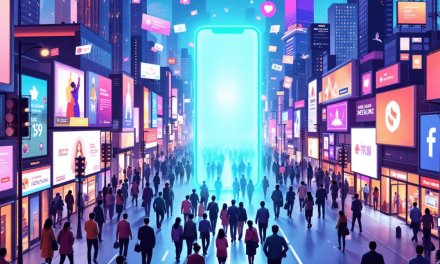But some challenges need to be addressed in Asia Pacific before retailers and business owners can effectively harness it for social commerce.
According to recent research, shoppertainment is poised to assume a pivotal role in shaping the future landscape of consumers and commerce in 2024.
This emerging trend provides brands with innovative avenues to engage consumers and establish a distinctive presence in a saturated market – ultimately resulting in heightened sales and strengthened brand loyalty.

According to forecasts by BCG and TikTok, this sector is projected to evolve into a 1-trillion-dollar market by 2025, marking a substantial increase from its current valuation of 500 billion dollars. Furthermore, a joint study by Accenture and TikTok sheds light on the considerable potential of shoppertainment within the Asia Pacific market. The emphasis is placed on the imperative for brands to prioritize consumers’ emotional needs through content-driven commerce that provides entertainment value.
Despite the decade-long existence of the shoppertainment concept and its recognized transformative impact on digital commerce, particularly in Asia Pacific, retailers and business owners are encountering challenges in adapting to this trend.
This struggle raises concerns about the risk of tardiness to the shoppertainment landscape, highlighting the importance of swift adaptation to remain one step ahead of industry developments. MartechAsia reached out to Vaibhav Dhabhade, CEO & Founder, Anchanto, to find out more.
What is “shoppertainment” and what is its impact on e-commerce?
Vaibhav: Shoppertainment is a combination of the words “shopping” and “entertainment. It focuses on the shopping experience and is the act of making the purchasing journey entertaining for consumers. In e-commerce, it is the strategic blend of online shopping and entertainment to engage customers and promote sales.
The term “shoppertainment” is believed to be coined by Lazada in 2019 when they reinvented online shopping with their focus on live stream events, interactive features, and games. Most often shoppertainment is available in the form of interactive content, live events, or unique experiences as it is content driven commerce that entertains and educates first.
Today, shoppertainment serves as a business strategy that helps brands and retailers in selling online to stand out from the crowd. According to a recent whitepaper, consumers are becoming less impulsive and discount-centric when purchasing products online. They seek content that reveals the true value of products. In fact, there is a growing demand and expectation for content to elevate shopping experiences and facilitate browse-to-buy across platforms.
A study, also points out that shoppertainment has had a remarkably evident impact in certain retail categories. For example, fashion and accessories attribute 18% of their market value to shoppertainment. Beauty and personal care products see a 14% contribution while food and beverages claim 13% of their market value comes from shoppertainment.
TikTok, along with WeChat, Instagram, Facebook, Lazada Live Streaming, and Shopee Live, are spearheading the transformative wave of social commerce and the concept of shoppertainment.
How can businesses and retailers leverage shoppertainment to increase ROI?
Vaibhav: Shoppertainment comes to life through interactive content, making it the focal point for businesses aiming to captivate consumers through this offering. However, when creating this content, businesses are expected to deliver real value to customers, which is the key to getting them interested and making purchases.
Research shows that most consumers, about 79%, are more likely to buy products when they see content that explains the product’s value rather than just seeing discounts. This presents an opportunity for businesses to create valuable content that can boost shopper confidence, leading to more sales and larger purchases.
Additionally, 81% of consumers expect online platforms to provide comprehensive information about brands and products to make their shopping experience easier. By offering detailed and actionable content, businesses can enhance convenience for consumers, whether they’re browsing on an app, marketplace, or direct-to-consumer platform.
How should businesses integrate shoppertainment into the shopping experience to improve the overall customer experience?
Vaibhav: Buyers want to connect with products before making a purchase, and immersive experiences help build these connections. An immersive experience can be described as the multisensory interactions that a consumer has with a brand or business. This can include a combination of conventional online listings, interactive live streams about the product, and a 360-degree product view.
Businesses can offer these immersive experiences through their online stores, marketplaces (if the platform supports this), social commerce and live streaming channels. These platforms should enable retailers, brands, and influencers to live stream product demonstrations, Q&As, and interactive sessions to promote products and encourage sales. But to effectively integrate shoppertainment into the shopping experience, businesses should:
- Have a deep understanding of their target demographic and preferences. They should tailor shoppertainment experiences to resonate with customer interests and lifestyle.
- Ensure that the entertainment elements complement their products or services being offered and enhance the overall retail presence.
- Incorporate interactive elements that encourage active participation from customers. This could include virtual try-on experiences, interactive displays where customers can customize products, etc.
- Encourage customers to capture and share their experiences online, extending the reach of a brand and fostering a sense of community.
What are some key strategies for business owners to prepare their platforms for the emergence of shoppertainment?
Vaibhav: A major step that businesses can take to prepare for shoppertainment is to collect data through their digital shelf analytics for a better understanding of their customers, business, and competition. With knowledge of consumers preferences, catalog performance, market prices, and competitor sales and rankings, businesses can focus on promoting specific products through shoppertainment in a calculated manner. This will help them implement the shoppertainment business strategy where it makes the most sense.
Businesses can (and should) go a step further once a sale is made (let’s say through live streaming) to offer a satisfactory post purchase experience. For this, investing in advanced tracking technology is a must. This will give businesses the means to keep their customers informed about parcel location and estimated delivery delays. Customers appreciate visibility post online purchases as it increases the value of their shopping experience.
Given that shoppertainment is growing on social platforms and newer versions of marketplaces like Lazada Live Streaming and Shopee Live, it is also vital for businesses to integrate their backend systems with these platforms. This will help unify their sales channels and manage all orders in one place.
Many brands and retailers use social media channels to sell their products in addition to traditional marketplaces. Instead of managing their social channels separately, they can unify all sales channels on a central dashboard for complete visibility, control, and smooth order orchestration.
Besides their orders, they can also centralise their inventory to prevent the overselling and underselling of products.
At Anchanto, we help our clients to implement these strategies to manage connected retail ecosystems. That way, their operations run smoothly, and their systems collect and convey accurate information in a timely manner. Moreover, they receive the ability to automate repetitive tasks for fast and error-free results.
Who are the partners Anchanto is currently collaborating with in the region in terms of social commerce integration?
Vaibhav: Anchanto is currently working with Line Shop and TikTok Shop in the APAC region. We have ready integrations with these social commerce platforms. These integrations help businesses centralize and auto-sync inventory and update available to purchase stock based on current inventory levels. They also enable businesses to centrally view, manage and process all order types.
These platform integrations also allow businesses to create, add, edit, monitor, and clone listings from the social commerce platforms to other marketplaces and stores. Through the platforms’ integration with Anchanto Digital Shelf, businesses can even perform price analysis, gain share of search visibility, and measure store health and customer sentiment.
In time, we aim to develop integrations with more social commerce platforms based on client demands in Asia Pacific. We’re presently seeing the barriers to shopping on social platforms fall with the launch of features like live shopping. This enables online retailers to build entire storefronts on social platforms.
With the popularity of social media and now the convenience of shopping on these platforms, consumer interest in this form of retail is increasing. According to a survey, almost five in 10 Southeast Asian consumers watch livestream sales at least once a week. As retailers plan to capitalize on the demand for livestreams and social commerce, we aim to bridge the gaps so they can maintain a connected ecosystem that works seamlessly.

















